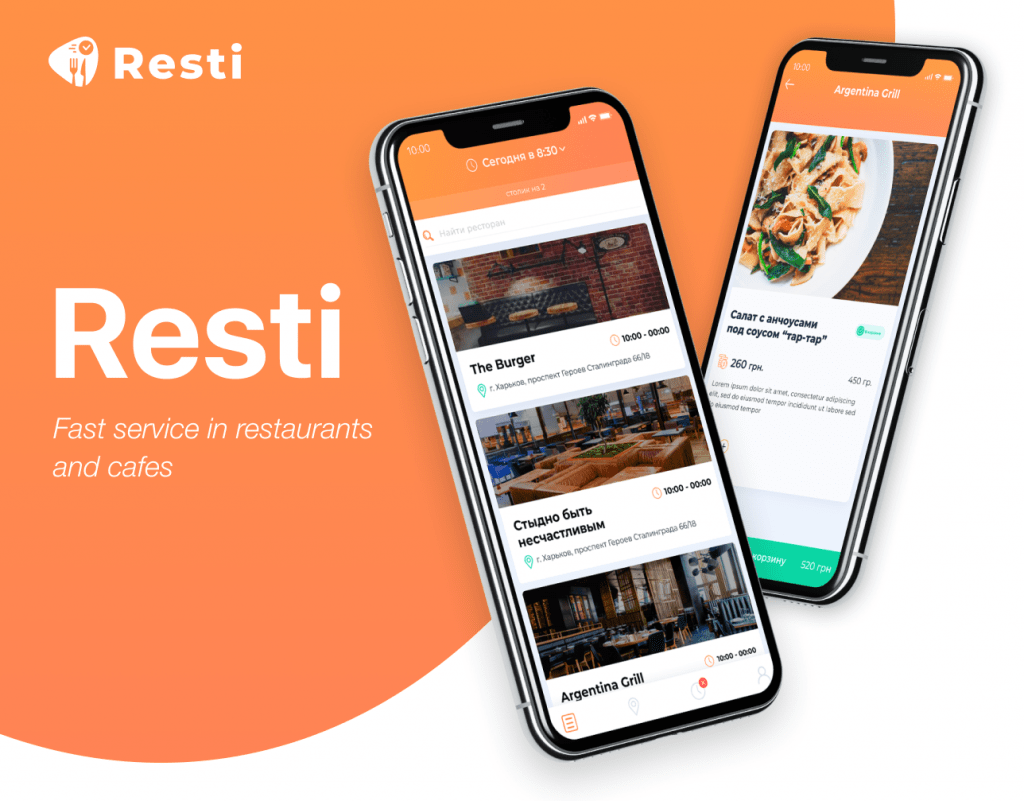Resti Episodes
In the Resti Episodes – series of articles – we’re going to get acquainted with a software development team which decided to build a startup – a software application.
There will be a bunch of articles about this startup and team, so, take a proper seat and let’s watch (read) the first episode.
Why do we create this blog about our Tech Startup?
We know that a lot of companies try to build up a technology startup and we hope our own experience will be useful for others and for our clients who are building software applications with the help of us. We have made a lot of mistakes to get on track and now we have a proper understanding on how to create a successful application from scratch not only from the development standpoint but from the business spectrum as well.
Nowadays, there are a lot of different “billion dollars” tech startups ideas and directions like SaaS applications, IoT applications, Mobile services, Management apps which automate the processes and etc. Despite the fact OSDB company has developed all of those from scratch, the most complicated task yet was to define how to choose IT startup idea for the next tech business which is going to be presented on the market.
And usually it happens in a different way rather than a proper market evaluation and non-emotional choice… as it happened this time.
Accident conversation
Having had a party of OSDB (the software development company) anniversary a development team had a lot of fun and was chilling at the office. At the mid of the party a casual scene could be seen: a group of people standing outside smoking and talking about different topics. One of the topics was an issue that the current restaurant market is overwhelmed with visitors and it’s so tough on a daily basis to come for a lunch and leave quickly as you’re usually delayed with the waiters or the absence of vacant spots at the lunch time.
As we daily work with software apps creation the first suggestion of the group was: Why don’t we build a food startup app which could resolve that?
The replies from different people of the group were:
- Oh, I am facing it daily and there are frequent situations when I come to the restaurant for a lunch during a working day and every single table is taken by someone else, so, I need to go to another cafe or wait which means loosing precious time during a working day.
- We’ve thought over that already and we even have a scratch of a business plan for the startup.
- I’ve even started a development of such a tool – mobile application from scratch.
The star shined in the sky and it was decided the dialogue needs to be proceeded.
Resti – tech startup service for busy cafe visitors
The main idea became developing a mobile application for restaurants and restaurants’ visitors who could quickly book a table and order a meal for a specific day & time to be served within minutes once you come to the cafe during overwhelmed lunch hours.

Market Evaluation, Business Idea Validation and Core Features defining
After a great party and a conversation the team scheduled a first new Startup meeting for Saturday to sync up on this topic being sober. And this meeting brought up a few main topics:
- How to validate the market for our startup application?
- How to validate the mobile app idea?
- What core features should the app contain at the MVP stage?
During the first Saturday meeting Google pages were investigated and some competitors outside of the Ukraine (the country we’re in) were found. The “great” news was that there are no live competitors in the country now.
Mistake #1 – We haven’t properly investigated WHY there are NO COMPETITORS.
Having seen the “blue ocean” in this market the motivated team decided to immediately start the development of the app.
As you can see our business validation and market evaluation were not proper. It missed the basics which we had to follow: at least to have interviews with potential clients. In our case these are interviews with vendors (restaurants) and potential users. We haven’t also carefully researched why previous attempts of other companies who tried to implement such a kind of mobile application vanished from the market.
The mistakes startup owners make is that they fully rely on their own demand and their own faith on the need of the application they’re going to build. So did we.
The team consisted of 5 people who really liked the idea of this application and it seemed there is no doubt the market demands it. (NO). Nonetheless, sometimes pure faith is enough to push forward your idea but it costs a lot.
How to validate tech startup idea?
Having made such a mistake at the beginning we have carefully investigated all the approaches to startup validation and created a simple and useful script we’re following since then.
1. Create a portrait of your ideal client
| Industry | Restaurants |
| Industry Focus | Full-service restaurants and cafes with lunches |
| Place | UK, London |
| Position | CEO, Co-founder, CTO |
| Age | 28-35 |
| Company size (n. of people) | 2-15 |
| Issues our clients has and seeks to be resolved | 1. Overloaded kitchen during the lunch time 2. Visitors complain for the slow service of waiters 3. No tech innovations for the past 10 years |
It seems that the table is too simple and it’s even not worth filling it in. But it’s not so. Every cell of this table will make you have some insights on your customers and hence to build out a reaching/sales/marketing strategy.
Once in an interview, when asked how Steven Spielberg manages to create films of the era, he replied that he always makes them for one specific person.
Find your one specific person and develop your software for that person.
2. Create a basic presentation
You need to create a good pitch or at least a clear description of your service. As sometimes the interviewee can be bored with how we provide the text. Once you have a well-prepared text you don’t even need to learn it by heart. You will already have it as a plan of your speech which is more than enough at this stage.
The graphics is a good accomodation for the prepared text. You can do it for free with GooglePages, for instance. No special skills are required. Just put the main ideas on the slides and present those during your speeches.
You can also gently ask if the person wants to see the presentation as it may seem to the respondent that the chat will be too time consuming once you open a presentation. So, usually it’s worth asking before opening the presentation if the person doesn’t mind to take a look at it.

3. Create a questionnaire for your potential vendors or(and) users
You need to understand the details of the business of your vendor and sincerely feel yourself being on his/her place.
Here is the list of possible questions we could ask:
- How is the process of orders allocation is built in your restaurant?
- What is the percentage of booked tables which were empty during the evening as the visitor who booked hasn’t come?
- What are the top 5 points you’d like to improve in your processes?
- How much would you desire to pay to resolve these issues?
Try to avoid “closed” questions which required yes/no answer. Do you best to make the interview give you as many words as possible as you will have more possibility to properly understand the needs of your customer.
4. Find a way to reach your customers/vendors
It’s easy to do it nowadays as we have LinkedIn. Simply create a good introduction letter and accordingly to the Client’s portrait you’ve previously illustrated send connection requests to at least 300 people of the target audience. It will take you 6 days (1 hour per day, 50 connections per day at maximum (LinkedIn restrictions)). Sounds like not a lot of job but the value will be dramatic.
There are also a lot of automation tools for this kind of work which can scrape LinkedIn profiles and send automated requests instead of you. Feel free to email us at [email protected] to get the specific recommendation on that.
Once you have the connections offer a value in return for the interview which you will make. For instance, you can provide prolonged free trial periods of your mobile or web startup for those respondents in exchange for their feedback at the current stage.
5. Fill in the replies
I’d recommend using GoogleSheets and(or) GoogleForms. That is more than enough at the starting point.
Once you have at least 50 replies summarized in one document you can highlight the outlining “issues” which your users, vendors or customers are facing and in such a way to define the direction of your tech company startup and you can prioritize what are the main features for mobile or web application to start with. As at the starting point you need to be quick and develop the POC version first. We will get back to this topic in detail in one of the next articles.
6. Analyze the replies
Once you have gathered the required replies you can now easily define the patterns which are dominant at the most of vendors. Hence, that pattern can formulate a “problem” for you which vendors have.
For instance , in our case we supposed that we will help restaurants get visitors at the lunch time, though it later appeared they have enough orders at the lunch time and we will even make worse for them as the kitchen will be more loaded with additional orders through our application.
Meanwhile, the newly created restaurants are looking for any kind of promotion and they’re ready to pay more at the starting points of their business to get first visitors.
We hope the outlined instructions in this article and our story about missing market evaluation and app idea validation stage will give you some beneficial insights for your startup.
Should everything work great then?
Of course it’s not guaranteed yet, the adventure just begins.
And despite the fact we missed such an important stage of the startup app creation our team started the development process.



